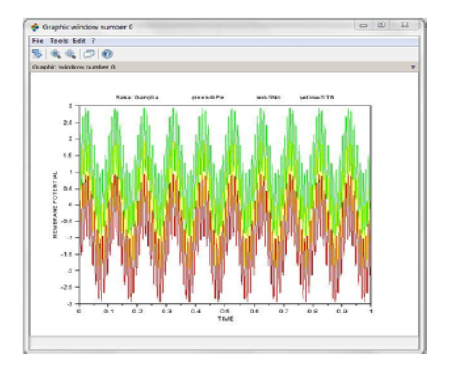


Indian Journal of Science and Technology
DOI: 10.17485/IJST/v15i36.1397
Year: 2022, Volume: 15, Issue: 36, Pages: 1836-1841
Original Article
S I Aruna1*, S Sujatha2, E S Neenu3
1Research Scholar, Registration No:19213082022001,Interdisciplinary Research Centre, Department of Biotechnology, Malankara Catholic College, Mariagiri, Affiliated to Manonmaniam Sundarnar University, Tirunelveli- 627012, Tamilnadu, India
2Assistant Professor, Department of Biotechnology, Malankara Catholic College, 627012, Mariagiri
3Programmer, Indriyam Biologics Pvt.Ltd. SCTIMST - TI Med, 5th floor, BMT wing, Poojappura, Thiruvananthapuram
*Corresponding Author
Email: [email protected]
Received Date:04 July 2022, Accepted Date:01 September 2022, Published Date:26 September 2022
Objectives: To mathematically model the oscillatory behaviour of Basal Ganglia for Parkinson’s disease as well as to simulate the model by using Cell designer and Scilab. Method: The pathway of Parkinsons disease was downloaded from the KEGG database and oscillatory behaviour was studied using scilab programming and cell designer tool. In this work, the pathway of Parkinson’s disease was loaded to cell designer, that is working on the basis of systems biology mark-up language, and analysed the entire pathway. Findings: The oscillary behaviour of basal ganglia is due to the absence or lack of dopamine and it can be verified with the aid of Scilab, programming. Novelty: Through this study, the computational tool cell designer and scilab programming, was newly introduced for analysis and modelling of oscillatory behaviour of neurons. It is concluded that the pathway and simulation of all disease can be analyzed in an accurate way using this software with in a short time period. Keywords: Scilab; Cell designer; Basal ganglia; Parkinson’s disease
© 2022 Aruna et al. This is an open-access article distributed under the terms of the Creative Commons Attribution License, which permits unrestricted use, distribution, and reproduction in any medium, provided the original author and source are credited.
Published By Indian Society for Education and Environment (iSee)
Subscribe now for latest articles and news.